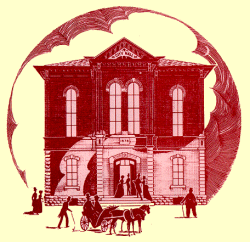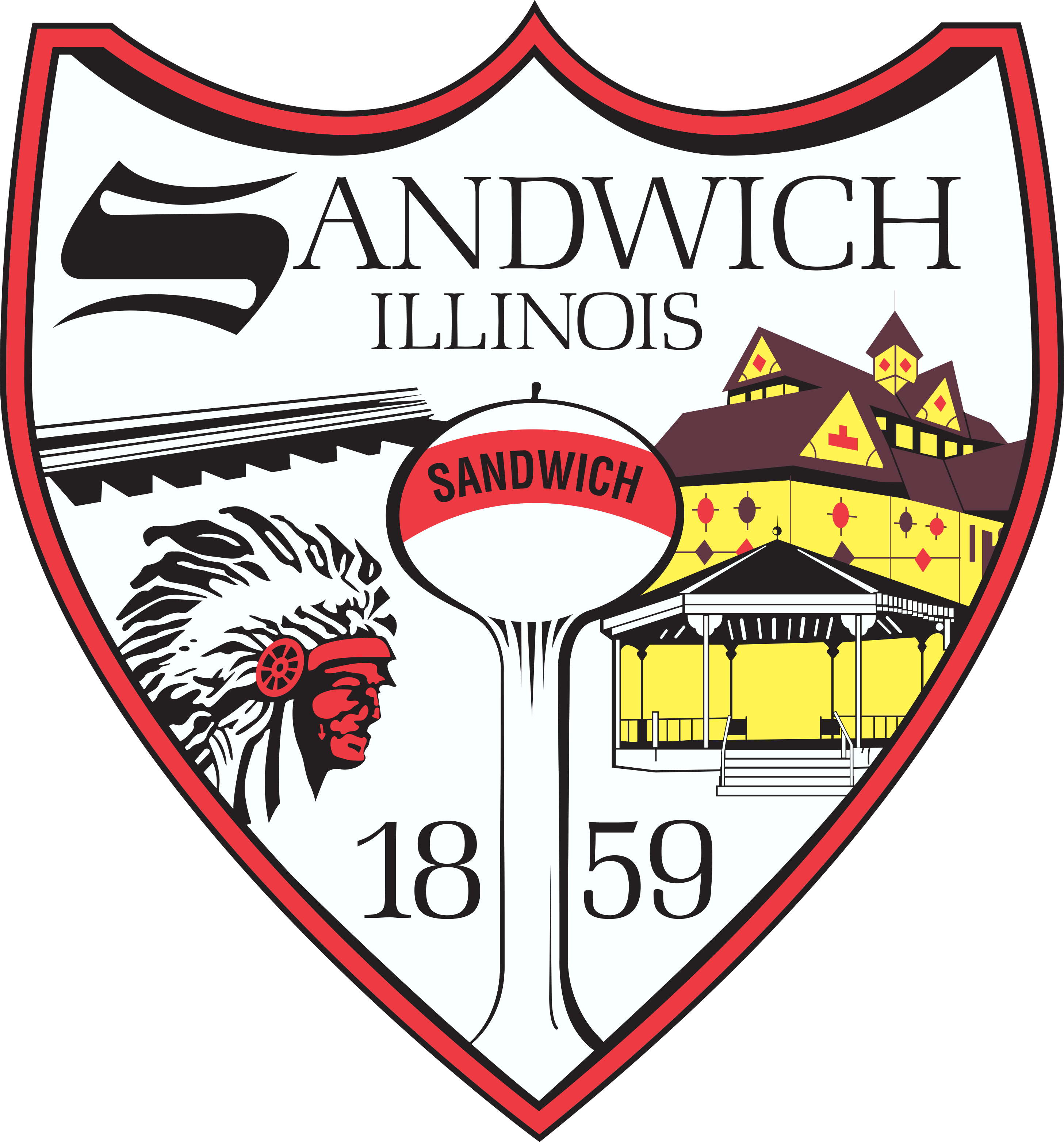Sandwich Opera House

Built
post Civil War in 1878, the City Hall of Sandwich with its Opera House
reflects the mixture of revival styles of those times and is a
distinguished example of the "Second Empire" style. The spirit of the
early years after that war broke apart pure styles and mingled and
transformed structures into the eclectic architectures of this building.
Also
in an adventurous "style" of those times, the mayor and city alderman
approved a bond issue of $10,000 (later an added $2000 in cost
over-runs) and assigned local architects and builders, brothers Enos
and Israel Doan to what became an exciting project. Although there are
no records which give the number of artisans employed, the 48 x 80 foot
building, with the lower floor 12 feet high and the upper floor with
balcony 22 feet, was completed on schedule in six months and was
dedicated with flowery speeches in January of 1879.
It
was one of the early buildings in the expanding mid-west which proved
to be a complete "community center" with offices for the mayor and city
clerk, council room, visiting judge's chambers, engine room, and
marshall's office and "with five strong jail cells for those inclined".
The second floor became the Opera House rather than "theater", since
that (heaven forbid) might have suggested a burlesque image.
In
addition to the function of city government which still continue,
activities in the Opera House included shows by traveling troupes with
everything from vaudeville to Shakespeare, home talent productions,
lecture series, W.C.T.U. meetings, recitals, high school plays and
graduations, church activities, the firemen's ball and many other
events. With passing years new outside facilities took over, leaving
the Opera House idle after World War II. However, functions of the city
offices continued within the building.
In
1979 a community group formed, and the building was placed on the
National Register of Historic Places. The Association to Restore City
Hall was given not-for-profit and tax exempt status in 1982, and a
grant of $1,275,000 from the Illinois Department of Commerce and
Community Affairs was approved in late 1983 to cover 75% of the
construction costs. The restoration and renovation was completed in the
spring of 1986. Michael Dixon, AIA, of St. Charles, is the restoration
architect.
Today
the Opera House again provides a modern setting for the performing
arts. There is a full season including classical music, country-western
ensembles, student recitals, bluegrass music, dance, three two-weekend
productions by the resident company Indian Valley Theatre, pop
performers, summer theater workshops for children, et cetera. Rental
performances are also given as scheduling permits.
Contact
the Opera House if the season's "mailing" is of interest, and for
rental information concerning the theater, reception, and community
rooms.
